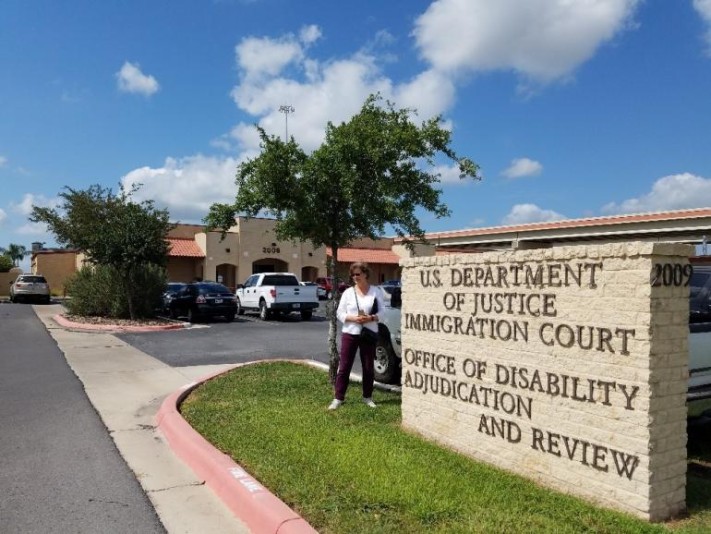Borders and Boundaries Report From the Road: Borders and Boundaries with Beth Simmons Part 3
Basic Page Sidebar Menu Perry World House
June 23, 2017
By
Beth Simmons
A Penn Integrates Knowledge (PIK) Professor at the University of Pennsylvania, Beth Simmons is the Andrea Mitchell University Professor in Law, Political Science, and Business Ethics, with joint appointments at the Penn Law School and within the Political Science department in the School of Arts and Sciences. She is a world-renowned expert on international relations and human rights. Her new project, Borders and Boundaries in World Politics, which is a part of Perry World House’s Global Innovation Program, is concerned with boundaries between organized human communities.
Borders and Boundaries seeks to understand the multiple significances of boundaries, including those designated as state authority, security buffers, expressions of social meaning, and opportunities for economic integration. The Borders and Boundaries project hopes to contextualize border architecture, infrastructure, and institutions as expressions of social, political, and economic anxieties associated with globalization. Dr. Simmons will teach a course this fall on Borders and Boundaries in International Relations, which will focus on these concepts.
As part of this project, Dr. Simmons is spending time this summer on the US/Mexican border conducting research. Perry World House will share Dr. Simmons’s occasional field reports from the road on our blog for the duration of her trip.
June 19, 2017
We stayed in the McAllen-Harlingen area another day for a specific reason: to attend a hearing at the US Immigration Court at Harlingen. First stop, though, was at the South Texas Pro Bono Asylum Representation Project (ProBAR), to get the lay of the land regarding legal asylum cases. ProBAR is sponsored and supported by the American Bar Association and the Texas Access to Justice Association – part of a national effort to provide pro bono legal services to asylum seekers detained by the United States government. We spoke with Emily Joiner, who works on the children’s rights side. Her office – with an attorney and a small staff of social workers and counselors – concentrates on helping detained unaccompanied children, most of whom do not speak English, to understand their legal rights.
Then it was on to the Immigration Court. The court is an unassuming brick building right next door to the Social Security administration on the edge of town. Few cars were in the parking lot. We passed through security – no guns, cell phones, cameras or recorders – and into the cool waiting room. There were perhaps thirty or forty plastic chairs in rows in the waiting area. Perhaps five people were seated, waiting. The schedule of hearings for the day was posted by the reception office. Several of the morning hearings were marked “no shows.” So we returned in the afternoon. There were four courtrooms, three in use. The public was conspicuously absent. Despite our road trip attire, as we entered one courtroom we were asked whether we represented the respondent – a question that surprised me, given that we clearly did not know what was going on. Hearings are public, with no special permission required, unless the respondent requests that they are closed, but it was a strange feeling to enter a court room as an outsider to the process. The first case was a removal hearing for an undocumented person who had committed two DUI offenses. The judge asked him if he wanted the hearing open or closed. He chose the latter and we shuffled out.
Entering a second courtroom, we found a family of three involved in an asylum case. When the judge asked, they agreed to a public hearing. A court clerk sat to the right of the judge, and a translator to the left. The husband and wife sat with headphones on, the Department of Homeland Security (DHS) attorney at a table to their left. They were unrepresented, while their 8-year-old son waited (for 4 hours, it turned out) to their right.
A few things struck me about this hearing. Despite the lack of respondent resources by the detainees, there was a clear effort at fair and thorough proceedings. Because they had no attorney, the judge did the questioning of witnesses, of which there were two: the wife for the husband and the husband for the wife. The translation was instantaneous and, to my ears, without a hitch. Every word of the proceedings were translated, down to the last “si” and “no.” When the judge felt the respondents did not understand his question, he asked it again, sometimes 4 different ways, to be sure they understood what he was asking. And yet it was clear respondents had not come fully prepared. No attorney, for starters. They lacked necessary documents, and they were unable to get a signature certifying the translation of documents from Spanish to English. No one, they said, was willing to certify the translation.
Their story was likely a common one: the family sought asylum because of threats to their safety and lives from extortionists, who they claimed were connected with both local police and violent criminal gangs. Demands for money, beatings, and threats against the life of the wife and child drove the family to leave their home on the outskirts of Mexico City. Now here they were in Harlingen, where they faced questions about just how dangerous it would be to return; why they couldn’t move to a different part of Mexico; whether there was real evidence that police had been a part of the extortion.
I don’t know how the case will be resolved. After four hours in court, continuance was granted for a date in late November to get those translations signed.


